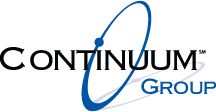Profit Improvement Planning Blueprint
Companies facing financial hardship, whether simply underperforming expectations or in distress, require a path to improve their operational performance and profitability.
Here, we present a “Profit Improvement Blueprint” comprised of 8 Essential Elements that serve as a guide to revitalizing businesses in either of these challenging situations.

Profit Improvement Planning Blueprint
The Eight Essential Elements
Profit Improvement Planning Blueprint
Profit Improvement Planning Blueprint
1. Baseline Current Performance
Understanding the current situation is critical to driving sustainable positive change. It acts as the guiding compass for the organization’s assessment of market, customer, product and service offering profitability.
While the current Profit and Loss (P&L) statement provides a starting point, further analysis is typically required to uncover hidden opportunities. Delving deeper allows the organization to unearth underlying causes, validate improvement avenues and anticipate potential challenges.
Pro Tip: This stage can consume considerable time and resource – delaying needed profitability improvements. A baseline that is directionally “accurate” versus “precise” is sufficient as it will likely contain estimating errors and inaccurate assumptions, which will need correction as they manifest.
2. Implement Immediate Cost Control & Pricing Changes
While working on the baseline performance analysis:
- Examine non-essential spending, eliminating all unnecessary expenses while reducing/enhancing control over others.
- Consider raising prices where necessary and feasible, particularly for products or services that are unprofitable and over-taxing the organization.
Pro Tip: Keep in mind that 1) specific cost areas like training and travel only offer short-term opportunities for positive resource reallocation and 2) it is acceptable to part ways with unprofitable customers/products.
3. Assess and Right-Size the Organization
An organization that is sustainable with a productive workforce is the goal of any organization. Right-sizing the organization involves evaluating workforce capabilities, roles and structures to boost productivity and reduce costs. A lean, nimble and properly sized organization is better positioned to adapt to change, enhance competitiveness and sustain long-term viability.
Pro Tip: While reducing a workforce is difficult, it’s important to remember that contributing individuals thrive in a secure, lean, robust and agile work environment.
4. Identify Candidate Improvement Opportunities
Leverage the insights gained from the baseline analysis, engage key leaders for their perspectives, conduct brainstorming sessions, solicit input from employees and review existing processes to pinpoint opportunities for enhancing efficiency, reducing costs, adjusting pricing, or enhancing customer experiences. Once compiled, this list will serve as the foundation for developing a targeted profitability improvement plan.
Pro Tip: When collecting the list of improvement opportunities, give each a rating (high, med, low) of Benefit Size, Time-to-Benefit, Cost of Implementation and Implementation Risk. This will help prioritize and focus the development of the profitability improvement plan.
5. Develop a Focused Improvement Plan
Use the baseline analysis and the candidate opportunities to formulate the profitability improvement/turnaround plan. Key steps include:
- Prioritize and select a few (less than 5) projects from the candidate opportunity list to be addressed in phase I of the improvement plan. These should be the opportunities with High Benefits, Low Implementation Costs, Low Time-to-Benefit and Low Risk.
- Select a proven, visionary leader to manage the overall profitability improvement/turnaround program. Note: In a distressed environment, it is often recommended to use an outside turnaround professional.
- Identify the teams and team leaders for each sub-project – charging each team with developing plans that include expected timing, resource requirements, benefits, risks and success measures.
- Use the baseline analysis to put together a 6 to 12 month financial performance forecast (income statement, balance sheet, and cash flow), at a 90% confidence level, assuming none of the identified changes have been implemented.
- Adjust the above forecast, adding the timing, benefits and implementation costs of the individual project plans.
Pro Tip: During implementation planning, establish clear success metrics to verify that the changes are delivering the desired and sustainable outcomes.
6. Create a “Tagline” or “Slogan” for the Plan
A simple slogan or tagline creates mission clarity, consistent messaging and organizational alignment. It succinctly communicates purpose and tactics, ultimately enhancing the success and effectiveness of the plan’s implementation.
Pro Tip: Adding a story to compliment the slogan/tagline further bolsters the probability of success. People are more likely to rally around narratives than numerical targets, as stories resonate, inspiring action.
7. Develop the Communication Approach and Strategy
Communicate – Communicate – Communicate! Frequent and transparent communications help build trust among employees, team members and outside financial partners enabling improved collaboration, problem-solving, decision-making and course correction. Regular updates on progress, implementation successes and delivered results keep an organization engaged and focused on achieving the desired results.
Pro Tip: Don’t shy away from communicating bad news and describe the adjustments underway to address and mitigate potential negative outcomes.
8. Establish a Process for Course Correction
Unforeseen events and outcomes are inevitable and the most successful organizations quickly recognize and adapt to such variability. Establishing an early warning system to identify and address implementation issues enhances overall success and accelerates time-to-benefit.
Pro Tip: Integrate the implementation planning metrics to create a green–yellow–red tracking/warning system to monitor both implementation progress and delivery of the expected financial results.
This “Profit Improvement Blueprint” serves as a roadmap for companies seeking to navigate challenges and enhance their profitability. By incorporating these essential elements into their strategy, businesses can embark on a transformative journey toward sustainable success.
As mentioned above, check back in the coming weeks to see additional detail on each identified essential elements.
Profit Improvement Planning Blueprint
Profit Improvement Planning Blueprint


